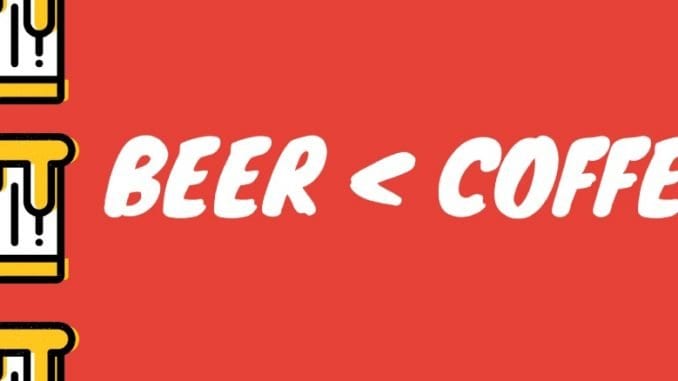
Can beer brewers become roasters? Are coffee and beer at all the same? In this series, Ben Dorrington gives us an intimate look at his transition from the beer world to the coffee world.
BY BEN DORRINGTON
SPECIAL TO BARISTA MAGAZINE
Episode Three: Juggling variables, comparing extraction, and enduring skills testing
(If you’re new to this series, you can check out episode one here and episode two here.)
After having my synapses snapped on the first day, I was excited to see how the first couple of weeks would play out. As with any new career, there was sure to be a sharp learning curve at the start, followed by a period of me feeling like I knew what I was doing. The main focus for my first two weeks, apart from getting to know a never-ending stream of staff and regulars, was to understand espresso techniques and general work flow in our cafes. The end of week one would be espresso training, the end of week two would be taking our company’s barista test.
Espresso is a deceptively complex beast. Most regular Joes and Janes likely have no real idea of the multiple variables at play when pulling a truly magical shot. Indeed, my own father, an espresso-holic if ever there was one, has probably never weighed a dose, or really timed a shot. Having been specialty fans for quite a few years, my partner and I home brew with a Baratza grinder and an AeroPress. We use 17 grams of coffee, a two-minute extraction (using our oven timer for simplicity, it only has whole minutes), and a grind similar to table salt. Standard stuff.
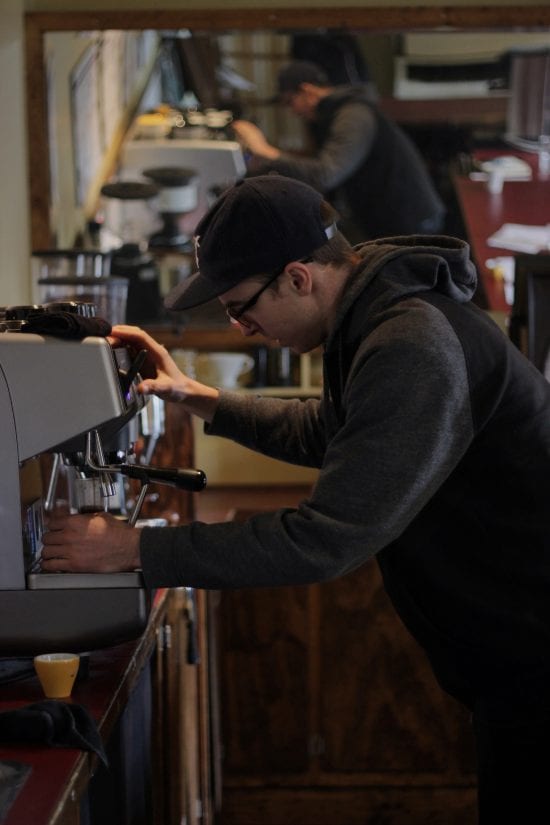
Espresso, however, takes it to a new level. Dry grams, wet grams, and time … if it doesn’t taste how you want and those three variables don’t fall where you need them to, how do you proceed? Do you tighten the grind? Well, that will drop the dose size. Up the dose size? Well, that will slow the shot down. I quickly learned that the most minute of adjustments could lead to a coffee-related, chaos-theory situation. Add to that a training lab equipped with often-fickle equipment, and I was very quickly feeling out of my depth.
For me, learning to make espresso compares to the first time you try to wrap your head around the beer-brewing process. Mill that grain just right to get good efficiency (extraction of sugars). Too coarse and you will leave sugars in the mash bed (under-extracted), too fine and you risk sticking your mash or pulling tannins from the grain (over-extracted). This stuff is hard, and true mastery of an espresso rig is a huge skill, often taken for granted by our customers. I have new respect for a talented barista who can interact with customers, grind and tamp one shot while pulling another, then move straight onto steaming milk, only to stop the second shot and lay a beautiful rosetta on top of both lattes.
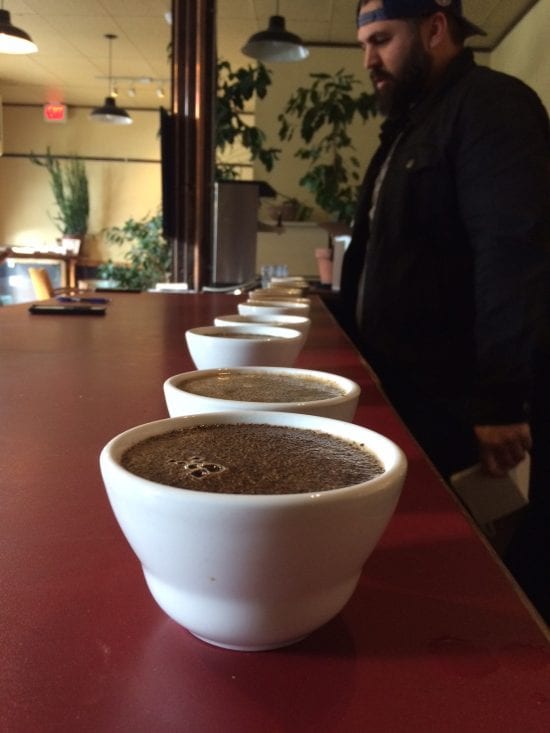
Speaking of steaming milk—disaster. Once I had somewhat wrapped my head around pulling espresso and had managed to pull a couple of half-decent espresso shots, we moved onto portioning and steaming milk. I can confidently say that the muscle memory for this part of the job is going to take some time. Too much aeration on my first jug leads to a measure of beautifully textured milk under a raft of second-wave dry cappuccino foam. I follow instructions from Brittany, our training manager, but manage to pour a half cup of froth followed by a dribbly stream of hot, thin, milk. Forget a Monk’s Head, as it cascades over the rim and into the sink—it’s closer to a mullet. My second jug yields a portion of exactly the opposite: thin and hot milk, with no microfoam. Brittany takes my hands and tries to guide me into pouring a respectable cup. Alas, the lack of microfoam means that we end up with a full cup of hot, milky coffee. “Finish it off!” my trainer cheers, while I try to imagine pouring a beautiful tulip and following through at the end of the cup. There’s milk and coffee everywhere, I’m all thumbs, and I’m left in awe of casually stacked latte art. Coffee fans of the world: Don’t be fooled by those Instagram videos of perfect free-pour art. They make it look so casual and easy … it’s not. I feel solidly humbled.
My Discovery Coffee Company barista test was to be the first real watermark of how well I was taking on the knowledge and skills of the job. At 1:30 p.m. on a Friday, after opening our Discovery Street store that morning, I sat down with Brittany and Kara, our general manager of cafe operations. Our test is based on SCA Barista Level 1 standards, with some of our own procedures thrown in for good measure.
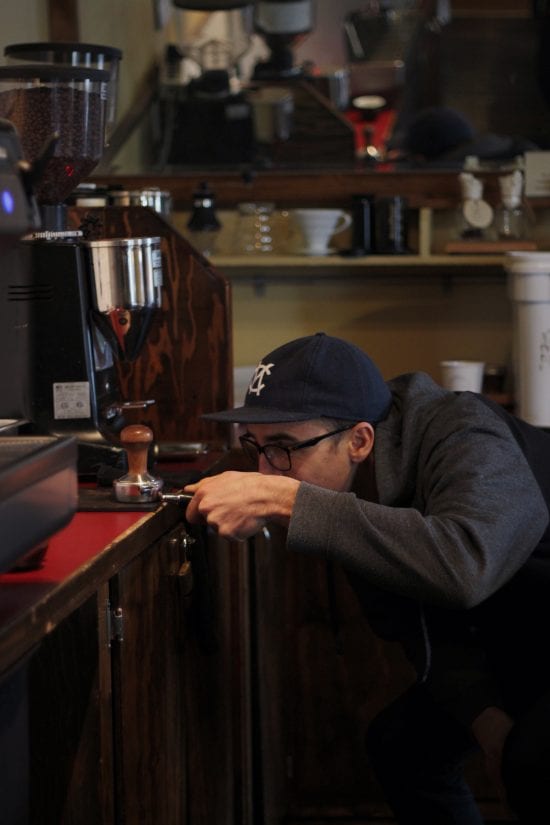
I set up the training bar in a mock opening procedure, purge and season everything, then attempt to dial in the espresso to the best of my week-old abilities. After pulling a couple of delicious fluke shots, all hell breaks loose as the dose decides to drop by a gram. I up the dose size, but somehow manage to pull a 42-gram shot (I was aiming for 34!). I fine up the grind size and pull … exactly the same shot?! After a few more attempts I manage to nudge things into our targeted range. Two espressos and two half-decent cappuccinos later, I’m feeling confident. The last round is a six-drink-order round; somehow I manage to make a latte, two Americanos, an Africano, a macchiato, and a cortado. The various sizes and shots give me a mild headache, but all are presented proudly, if somewhat unattractively, to my judges.
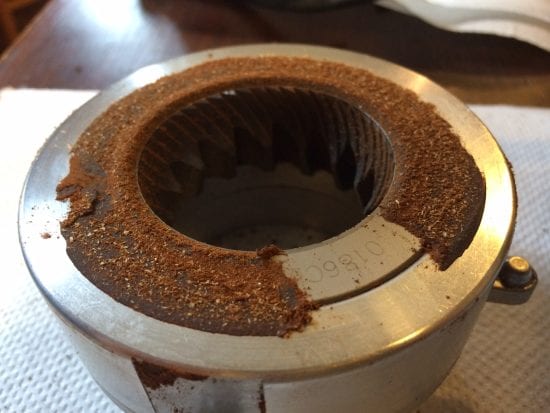
They deliberate while I clean up, and eventually they deliver their verdict: a PASS! After a week of training and some furious practice, I have somehow managed to show a basic grasp of espresso skills. Now the true journey to mastery begins: practice, practice, practice. After all, I don’t want to be that tech who leaves equipment wildly out of spec!
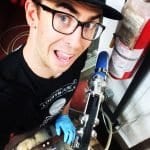 ABOUT THE AUTHOR
ABOUT THE AUTHOR
Ben Dorrington is a beer and coffee enthusiast. He has been a beer brewer for years, and is just getting his feet wet with coffee. He lives in Victoria, British Columbia, with his wife and daughter.

